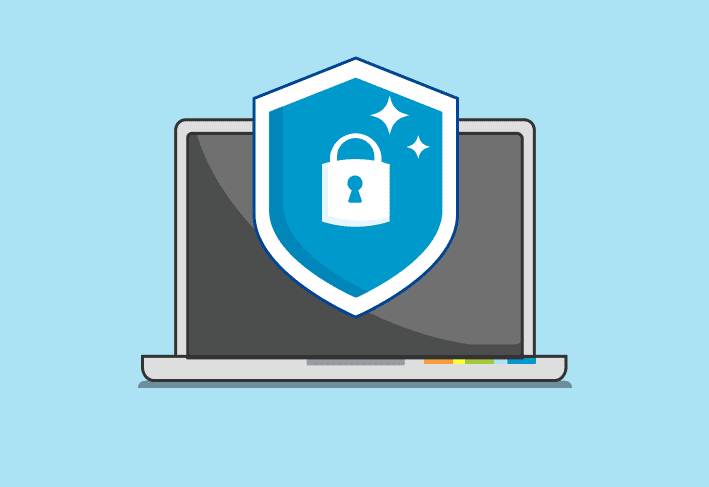There’s a great debate in cybersecurity: Should your organization’s strategy implement proactive or reactive measures? While Google search results may lead you to believe a proactive cybersecurity strategy is the only way to go, we beg to differ.
Our (mildly) spicy take is that a proactive cybersecurity approach should lead the charge at your organization — but reactive cybersecurity measures should tag along. 🌶️
What is proactive cybersecurity?
Proactive cybersecurity means hunting for threats and identifying gaps in your security posture before a security incident or breach takes place. When you take a proactive approach to cybersecurity, you scout ahead, binoculars in tow, and scrutinize your environment. And because you’re acting before a cyber incident occurs, you’re decreasing the chances that an incident will occur.
Examples of proactive cybersecurity
Examples of a proactive approach to security include threat hunting, penetration testing, and security awareness training.
Threat hunting
Threat hunting is the process of proactively searching for and identifying cybersecurity threats in your environment — long before your endpoint detection and response (EDR) solution or antivirus catches them. Threat hunting gives you the opportunity to identify weak spots in your existing security measures. And even better, proactive threat hunting helps you find and stop potential threats that dwell in your environment without your knowledge.
Threat hunting is particularly effective at finding quiet, hidden threats in your environment. While some threat actors still favor loud and overt attack tactics (such as ransomware), others prefer to be stealthy, gaining access to your environment and quietly sitting there, plotting their next move.
For example — and fair warning, it’s about to get a bit nerdy in here — take persistence, or MITRE ATT&CK tactic TA0003. Threat actors might establish persistence by weaseling their way into your environment and setting up a scheduled task that remains after reboot. Defenders wouldn’t typically cock a brow over a scheduled task — because let’s be real, some of them have weird names but are perfectly legitimate. Then, attackers use the scheduled task to call on malicious code to execute, which opens up a backdoor account for threat actors to maintain their access.
And because scheduled tasks remain even after a machine is rebooted, hackers can maintain their access until they’re ready to strike — or until you catch them.
Actively monitoring and verifying scheduled tasks is one way threat hunters can stay one step ahead of threat actors.
An unpatched vulnerability is a free pass to your environment
Patching vulnerabilities is a must for any cybersecurity strategy to be effective. And unlike most concepts in cybersecurity, vulnerability management doesn’t have to be complicated. See how easy it can be during a free trial of PDQ Connect.
Penetration testing
Sometimes, the best way to learn to fix things is to break them. And that’s the general goal of penetration testing, or pentesting.
Pentesting is an exercise that requires a person or team to try their best to hack your system. But unlike shady threat actors who do this, pentesters are ethical hackers who are kind enough to offer specific, tangible takeaways to help you strengthen your cybersecurity defenses. After conducting their exercises, pentesters analyze what went well and what didn’t, giving you a list of improvements to make in your environment.
Penetration testing is the ultimate test (see what we did there?) for your proactive cybersecurity defenses. These tests can be performed internally or outsourced to a trusted third party.
Security awareness training
An organization is only as strong as its weakest link. And if Jerry in accounting just can’t pass up an opportunity to click a link in an email, it’s imperative to help him understand why this is a bad practice. And that happens through cybersecurity training.
According to Verizon’s 2023 Data Breach Investigations Report, social engineering incidents have gone up since last year, and business email compromise (BEC) attacks nearly doubled from last year to this year. The cost of BEC attacks went up, too. In 2019, they cost businesses less than $20,000. This year, they cost a whopping median total of $50,000.
Security awareness training is the key to helping your end users understand the risks associated with poor cyber practices. And this training works — 67% of IT professionals claim their organization’s phishing failure rates went down with the incorporation of security awareness training. But it’s important to note that while training is an exceptional start, simulations and exercises up the ante and help your employees retain the knowledge they learn.
As they say, give someone a fish, and they’ll eat for a day. Teach someone about phishing, and they’ll safeguard your environment.
The benefits of proactive cybersecurity
Proactive cybersecurity offers many obvious — and some not-so-obvious — benefits.
Proactive cybersecurity can help prevent (or stop) threats
Threat actors lurking in your environment? Not on your watch, you proactive cybersecurity enthusiast.
Through each proactive cybersecurity measure, you’re reducing the chances that threat actors can follow through with their malicious plans. Proactive cybersecurity gives you the opportunity to find threats and eliminate them before any real damage is done. And even better, these security measures show what you can do better to protect your environment.
This will make your cyber insurance company happy when it’s time for a compliance audit.
Proactive cybersecurity makes incident response easier
Let’s be honest: None of us will ever be 100% immune to cyberattacks (and if your cybersecurity partners tell you otherwise, they are lying). The best we can do is be prepared for when the worst happens.
Proactive security helps us do just that. Because you’re actively searching for threats or weak spots in your defenses, you’ll have insights as to where to start looking when a real threat emerges. You’ll have a solid understanding of your environment, which makes threat detection and response easier. You’ll be able to find and respond to threats faster than if you relied on reactive cybersecurity measures alone.
Proactive cybersecurity helps you stay informed on the latest threats
You can’t go on a scavenger hunt without knowing what you’re looking for. The same concept applies to proactive security.
Proactive cybersecurity requires you to stay on top of the threat landscape so you’ll know what to look for in your environment. There’s a fine line separating the sus and the totally normal, and it takes a trained eye to tell the difference. Knowing those nuances helps you better protect and defend your environment.
What is reactive cybersecurity?
Reactive cybersecurity is the process of responding to a cybersecurity incident that's actively in progress or has already happened.
If proactive cybersecurity is the protective glass case around your environment, reactive cybersecurity is the broom and dustpan in the closet. Reactive security approaches help you deal with the aftermath following a cyber incident or security breach.
Examples of reactive cybersecurity
Examples of reactive cybersecurity approaches include break-fix solutions, disaster recovery plans, and antivirus software.
Break-fix solutions
If you’ve ever worked at a small business, you’re likely very familiar with break-fix solutions.
Break-fix solutions are exactly as their name suggests: something breaks, and someone fixes it. Often, the “someone” is an IT service provider that is commissioned to provide as-needed services, such as investigating a network outage. The IT service provider identifies the problem, fixes it, and bills the company for services rendered.
This reactive cybersecurity approach is fizzling out as businesses move toward managed detection and response (MDR) solutions. These solutions help businesses monitor threats in real time, ideally addressing them before they cause significant downtime. Proactive security approaches like MDR cause fewer headaches in the long run because potential problems surface before they get out of hand.
Disaster recovery plans
A disaster recovery plan is a critical component for business continuity during a cyberattack.
It’s impossible to prevent all cyberattacks, so all we can do is the next best thing: be prepared for the worst-case scenario. During times of crisis, it’s hard to think straight. A disaster recovery plan makes it easier to get back on your feet.
Your disaster recovery plan should have a few key components to minimize downtime. These components include:
An inventory of your assets (shameless plug — we can help with that!)
A list of your critical resources
Your recovery objectives
A risk assessment
A data backup plan
A roundup of key team members
A communication plan
A blueprint of your network infrastructure
Disaster recovery procedures
And don’t forget to regularly test your plan and update it as necessary.
Traditional antivirus software
Antivirus software is one of the most common reactive cybersecurity elements. Traditional antivirus software flags known malicious signatures once they’re already in your environment. This makes traditional antivirus fall into the category of reactive cybersecurity practices.
Many businesses are moving toward next-generation antivirus (NGAV) solutions. NGAV is more advanced than traditional antivirus software, using artificial intelligence (AI) and machine learning (ML) to detect threats that traditional antivirus software wouldn’t catch, such as fileless malware. But traditional antivirus software falls on the reactive side of the cybersecurity spectrum, only identifying threats already present in your environment.
The best approach to cybersecurity
Many organizations, particularly small businesses, rely on reactive cybersecurity — but as we face today’s advanced threat landscape, reactive cybersecurity is no longer feasible on its own.
The best cybersecurity strategy relies heavily on proactive measures — but reactive measures matter, too. For example, you should proactively hunt for threats — but you should also have a disaster recovery plan in place for when you get compromised. You should offer employees security awareness training — but you should also use antivirus to help shine a spotlight on what happened when Bob clicked that phishing link that had a trojan attached.
In short, a proactive cybersecurity strategy helps you minimize your risks. A reactive cybersecurity strategy helps you clean up those inevitable messes whenever a malicious actor is successful. And both approaches together make hackers work harder to gain access to your environment.



